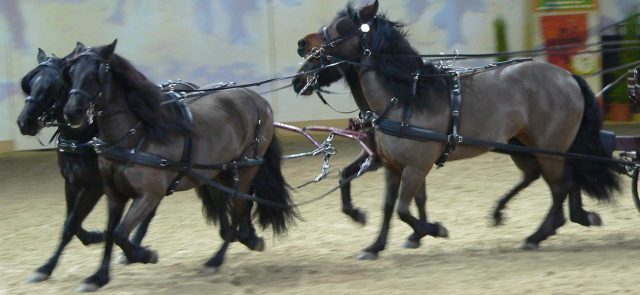Type the name of the breed you're looking for below
[wpdreams_ajaxsearchlite] Don't see the breed your're looking for? Click here and let us know!
Bardigiano horse
| Country Of Origin | Italy |
| History and Background | The Bardigiano appears to have descended from the horses ridden by Belgian Gauls during their invasions into Italy during Roman times. This is the same ancestor from which the Haflinger appears to have developed. Over the centuries, the Bardigiano has adapted to the rough, mountainous habitat in the Northern Apennine region of Italy. As well as having some relationship to the Haflinger, the breed also bears characteristics similar to the English Exmoor and Dales ponies as well as the Asturcon. During World War I and World War II, Bardigiano mares were used to produce first-class mules, and in the process the number of purebred Bardigianos was significantly reduced. After World War II, in a move that is now widely considered a mistake, a diverse range of stallions from various breeds were introduced to re-establish the breed. However, this caused the breed to deteriorate and begin to lose its defining characteristics. Thus, in 1972, a committee was formed that has since successfully re-established the Bardigiano breed. |
| Use Today | Pleasure horse, Show horse, Horse therapy, Mountain trekking, Meat |
| Height | 13 to 14.1 hands high (52-56 inches, 133-142 centimeters) |
| Colour | Bay |
| Characteristics | Physical characteristics of the breed include a small head with a straight or concave profile, low withers, straight back, deep girth, and overall a muscular appearance. The only recognized coat colour is bay, and dark bay is preferred. Chestnuts and light bays are not recognized. Limited rabicano and white markings on the legs and face are allowed, but white facial markings with excessive lateral extension (commonly referred to as "bald-faced") are not. |
| Personality and Temperament | Docile nature and easy to work with Great children’s horse |



